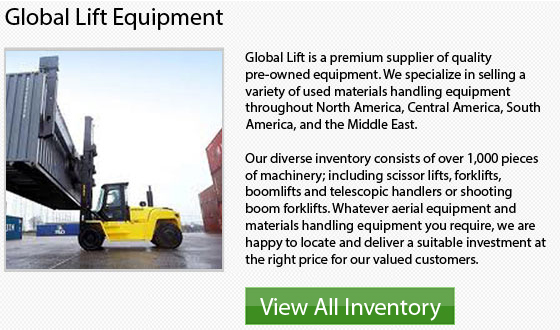
Around 60 percent of the forklift market is made up by electric lift truck units. These units are powered by heavy, big lead-acid batteries which which prevents the machine from tipping over as it acts as the counterweight.
According to the ITA, electric counterbalanced forklifts are considered Class 1 forklifts. Class 1 is the category that includes all stand-up counterbalanced trucks and other electric lift trucks. Though the initial investment when purchasing an electric forklift is more than an IC or internal combustion truck, electric forklifts are much less costly to run and operate in the long-run. This is due to lower fuel and maintenance expenses, compared to the IC units.
Within North America, most electric rider lift trucks are designed for moving materials indoors. Electric rider trucks are utilized most frequently in warehousing applications, and retail spaces. The electric models are the right alternative for inside applications because of their ability to emit zero toxic emissions and make less noise.
Furthermore, electric forklift can usually work a complete 8 hour shift on one battery charge. Reloading, recharging and removing batteries, which roughly weigh around 3000 lbs. can be time consuming and difficult. This cumbersome job often requires a dedicated space for handling the battery. However, new fast charging technologies are now used to update this method and change the procedure to be able to accomplish it in a much faster way.
Fast charging technologies are considered the best charging technologies. It has changed electric unit lift trucks and the charging time of their batteries. The material handling industry experts, state that these new changes in the battery technology and battery charging systems can reduce charging time by as much as 50 percent!
IC Counterbalanced Lift Trucks
The IC powered lift truck would rely on types of fuels, like LPG or liquid propane gas, diesel, compressed natural gas or CNG and gasoline. The larger lift trucks are commonly used outside. Generally, these units operate on gas or diesel and uses air-filled or pneumatic tires in order to make them appropriate for rough terrain and steep slopes, as opposed to cushion tires. Cushion tires are better suited for smooth services and indoor applications since they are made from solid rubber.
The most popular fuel choice for indoor trucks is LPG. There are more than 600,000 propane-filled lift trucks today which are operating within DCs and in warehouses. These models offer various advantages. Like for instance, lift trucks that run on propane fuel maintain 100 percent constant power during operation. Furthermore, these units offer faster ground speeds than other power sources.